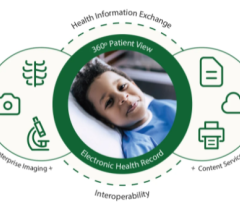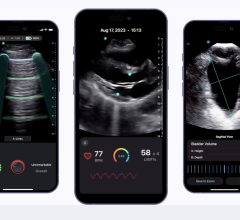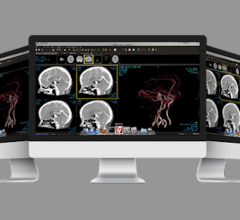
Human error is one of patient safety’s biggest enemies and while clinicians try not to make mistakes, they frequently have their attention pulled in several directions at once. Computers on the other hand can be programmed to look for mistakes to help avert problems, which is the main reason advocates say electronic health records (EHRs) are needed to make vast improvements in patient safety.
“Technology helps clinicians better care for patients,” said Linda Greene, RN, CCRN-R, IT Manager, Clinicals, Covenant Health, in Knoxville, TN. “We want to do the right thing for our patients, but we do work with a lot of interruptions and other duties that draw our attention away from our patients.”
Greene helps coordinate EHR implementations including interfaces with biomedical devices and her clinical information system by facilitating coordination between clinicians and the IT department. She has been a nurse since 1973 and has seen the conversion from paper to paperless patient records. She is a big advocate for EHRs because they improve compliance and can help increase staff efficiency while giving a major boost to patient safety.
“With the shortage in available clinical staff and the increasing acuity of our patients, information technology will help us do more with less,” she said.
EHR systems can help monitor patients and give clinicians “a nudge on the shoulder” if a vital sign is outside normal parameters, or if a drug is being administered that the EHR flags for a patient allergy.
“The clinical information system is sitting there trolling for opportunities to avoid these mistakes,” Greene said.
The EHR is a big boost to patient safety when it comes to shift changes, when patient safety issues frequently occur as new staff members come on shift and are unaware of problems with patients. With an EHR, Greene says the new nurses can view all their patients’ information in one location. With the McKesson Horizon Clinicals system in use at all of Covenant Health, Greene says safety issues can be identified by the computer system. Abnormal vital signs will cause a patient’s information to appear in red. The Horizon Care Alerts module can push this notification electronically when necessary. Staff can look at the flagged patient and see an audit trail of who has looked at the issue and see what is being done about it so they know whether or not they need to intervene.
Shift change reports are generated automatically in a format supported by Joint Commission among their National Patient Safety Goals.
EHR systems also help avoid human error with real time data entry and medical device interfaces rather than the transcription of vital signs and notes taken on rounds that are sometimes entered long after they were originally written. In addition, the computer reduces typing with build-in point and click data, she says.
Medication Safety
Greene says the technology of Horizon AdminRX the drug administration documentation system) and Horizon Expert Orders (the computerized physician order entry system, CPOE) shines a bright light on drug errors that was not previously possible. In many cases hospitals implementing CPOE and bar-coded medication administration documentation can potentially see a big increase in the number of errors being found. In some cases clinicians can’t believe the number of errors and blame the technology.
“This is akin to turning on a light in a dirty room and then blaming the light bulb because the room is dirty,” she said. “Technology will shine a spotlight on these issues.”
Greene says it is not the technology that is at fault, but ignorance of the true extent to which errors are missed, left unreported and are never caught.
“Ignorance is not bliss,” Greene said. “You need to acknowledge how bad it is and then figure out what you can do to improve, and continually strive and plan to make it progressively even better.”
The most common drug errors that are caught with these new systems are administration times. Greene said with paper orders a drug may be slated to administration at 8 a.m. However, when a nurse actually administers the drug at 10 a.m., they usually just initial the drug was given at the 8 a.m. time and no one knows the difference. With a computerized system these errors are caught and recorded.
“There is more accountability,” Greene said.
“The first time a nurse uses bar-coded medication documentation and finds out they were about to administer a medication to the wrong patient, you see the blood drain from their face as they confront that without the bar coding they know they would have given that patient the wrong drug or dose,” Greene said. “After that they are sold on bar coding and realize the technology is their friend and they don’t want to be without it.”
Making the Transition
All clinicians and sometimes more mature clinicians who are not used to using computerized systems sometimes resist new technology adoption because it interferes with their already busy schedule and changes the workflows they have used for years, and in some cases decades.
“The secret to embracing technology is to see it as a friend rather than as the enemy and resist it,” Greene said. “The implementation of a clinical information system is a large change management effort. Success in demonstrating the value helps personnel handle the transition, since even good change is painful.”
Education is the key, and hospitals need to train staff so they feel comfortable with the new technology and view it as a friend instead of something foreign, she says.
EHRs are the most effective and efficient when they are created and maintained in a partnership with both technically minded IT staff who understand computers and clinicians as the end-users who know what is needed for patient care. Clinicians who have added technical IT expertise to their skill set are enjoying heightened participation in the evolution of information technology in healthcare.
“In the old days we had to go through numerous pieces of paper to find the one you needed,” Greene said.
Today, she said, all clinicians need but a few clicks on a computer to find the information from anywhere in the hospital, or even remotely from their office or home. A few years ago there was one physical chart per patient with its logical access constraints. Today multiple caregivers may simultaneously access this single record for both data input and information retrieval real time from multiple local and distant locations. The challenge is to synthesize the data into information and apply rules that filter through only the actionable critical clinical data.
The healthcare industry has been slow to adopt new technology, but in the future Greene says clinicians everywhere will view EHRs and their ancillary systems as necessary and commonplace just as they do other technologies used in their daily lives.
“You can never dream of being without access to ATM’s today or being able to pay your bills online,” she said. “The same will be true of EHRs. There is a voracious, insatiable appetite for clinical information for data-driven decision making in medical care.”



 June 28, 2024
June 28, 2024 









